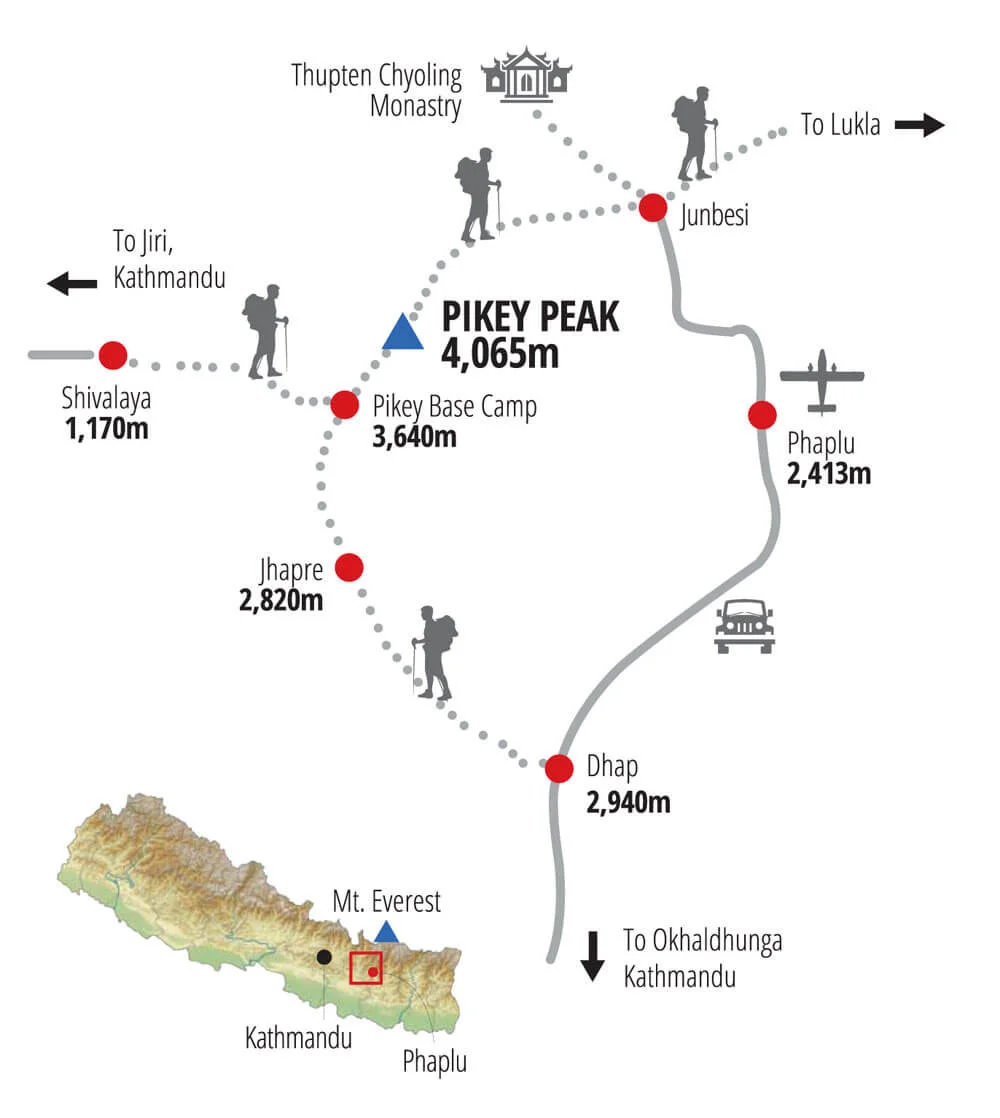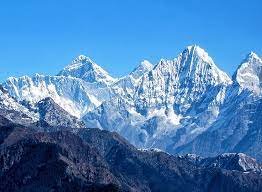Guide to the Pikey Peak Trek
Introduction:Nestled in the heart of the majestic Himalayas, the Pikey Peak Trek offers a unique and tranquil journey for adventure enthusiasts seeking a blend of natural beauty, cultural immersion, and a challenging yet rewarding trekking experience. This hidden gem, situated in the Solu Khumbu region of Nepal, has been gaining popularity for its breathtaking vistas, cultural richness, and the opportunity to escape the crowds that often flock to more popular trekking destinations.
Unveiling the Pikey Peak Trek
Overview:
The Pikey Peak Trek is a relatively lesser-known trekking route, offering a perfect alternative to the crowded trails of Everest and Annapurna regions. At an altitude of 4,065 meters (13,335 feet), Pikey Peak provides mesmerizing panoramic views of some of the world’s highest peaks, including Mount Everest, Makalu, and Kanchenjunga.
Itinerary:
The trek typically spans around 8 to 10 days, starting and ending in the charming town of Jiri. The journey takes trekkers through lush green forests, picturesque villages, and serene landscapes, providing an authentic taste of rural Nepalese life. The trail passes through quaint Sherpa villages, allowing trekkers to immerse themselves in the rich local culture and hospitality.
Key Highlights of the Pikey Peak Trek
1. Breathtaking Views:
The main allure of the Pikey Peak Trek is undoubtedly the breathtaking views it offers. As trekkers ascend to Pikey Peak, they are treated to a 360-degree panorama of the Himalayan range, with the sunrise and sunset casting a magical glow on the snow-capped peaks.
2. Cultural Immersion:
The trek provides a unique opportunity to interact with the local Sherpa communities. Trekkers can experience traditional Nepalese hospitality by staying in teahouses run by locals, enjoying authentic meals, and participating in cultural exchanges.
3. Diverse Flora and Fauna:
The trail takes trekkers through dense rhododendron and pine forests, offering a chance to witness the diverse flora and fauna of the region. The forests are home to various species of birds and wildlife, providing a natural spectacle for nature enthusiasts.
4. Off-the-Beaten-Path Experience:
Unlike more popular trekking routes, the Pikey Peak Trek remains relatively untouched by mass tourism. This ensures a serene and peaceful experience, allowing trekkers to connect with nature without the distractions of large crowds.

Planning Your Pikey Peak Adventure
1. Permits and Logistics:
Trekkers are required to obtain the necessary permits, including the TIMS (Trekkers’ Information Management System) and the local entry permit. These can be arranged in Kathmandu or upon arrival in Jiri.
2. Best Time to Trek:
The ideal trekking seasons are spring (March to May) and autumn (September to November) when the weather is clear, and the views are at their best. During these months, the temperatures are moderate, and the trails are adorned with blooming flowers.
3. Physical Fitness:
While the Pikey Peak Trek is considered moderately challenging, trekkers should maintain a good level of physical fitness. Regular cardiovascular exercises and strength training can significantly enhance the trekking experience.

Conclusion:
In conclusion, the Pikey Peak Trek stands as a testament to the hidden treasures that Nepal’s Himalayas have to offer. With its unparalleled views, cultural richness, and off-the-beaten-path experience, this trek is a must-consider for those seeking an authentic Himalayan adventure. As you embark on this journey, the serenity of Pikey Peak and the surrounding landscapes will undoubtedly leave an indelible mark on your trekking memories.
So, lace up your boots, pack your bags, and get ready to explore the enchanting beauty of the Pikey Peak Trek – a truly remarkable adventure in the heart of the Himalayas.
Frequently Asked Questions (FAQs) – Pikey Peak Trek
Q1: What is the Pikey Peak Trek?
A1: The Pikey Peak Trek is a trekking route in the Solu Khumbu region of Nepal. It takes adventurers to Pikey Peak, standing at an altitude of 4,065 meters, offering breathtaking views of the Himalayan range, including Mount Everest, Makalu, and Kanchenjunga.
Q2: How long does the Pikey Peak Trek take?
A2: The trek typically spans around 8 to 10 days, starting and ending in Jiri. The duration can vary based on the chosen itinerary and trekking pace.
Q3: What is the best time to undertake the Pikey Peak Trek?
A3: The ideal times for the Pikey Peak Trek are spring (March to May) and autumn (September to November). During these months, the weather is clear, and the temperatures are moderate, providing the best views and comfortable trekking conditions.
Q4: How challenging is the Pikey Peak Trek?
A4: The Pikey Peak Trek is considered moderately challenging. While it doesn’t require technical climbing skills, trekkers should be in good physical condition due to the varying terrain and altitude. Regular cardiovascular and strength training can be beneficial.
Q5: What permits are required for the Pikey Peak Trek?
A5: Trekkers need to obtain the TIMS (Trekkers’ Information Management System) and a local entry permit. These can be arranged either in Kathmandu or upon arrival in Jiri.
Q6: Can I trek independently, or do I need a guide?
A6: While it is possible to trek independently, many trekkers opt for a guide for navigation, cultural insights, and safety. Hiring a local guide can enhance the overall experience.
Q7: What is the accommodation like on the Pikey Peak Trek?
A7: Accommodations along the trail are typically teahouses run by locals. These offer basic amenities, including meals, a bed, and sometimes hot showers. It’s advisable to be prepared for rustic conditions.
Q8: Is the Pikey Peak Trek crowded?
A8: One of the highlights of the Pikey Peak Trek is its less-crowded nature compared to more popular trekking routes like Everest Base Camp. This allows trekkers to enjoy a more peaceful and authentic experience.
Q9: What cultural experiences can I expect on the Pikey Peak Trek?
A9: The trek takes you through Sherpa villages, providing opportunities to interact with the locals, experience their hospitality, and learn about their unique culture and traditions.
Q10: Can I see wildlife during the Pikey Peak Trek?
A10: The trail passes through rhododendron and pine forests, offering a chance to witness various species of birds and wildlife. However, the trek is not primarily known for extensive wildlife encounters.
Q11: Are there emergency services on the Pikey Peak Trek?
A11: While there may be basic medical facilities in some villages, it’s crucial to carry a basic first aid kit. In case of emergencies, evacuation services can be arranged, and having travel insurance is highly recommended.
For more Details Contact Us Jagadamba Holidays Pvt. Ltd

